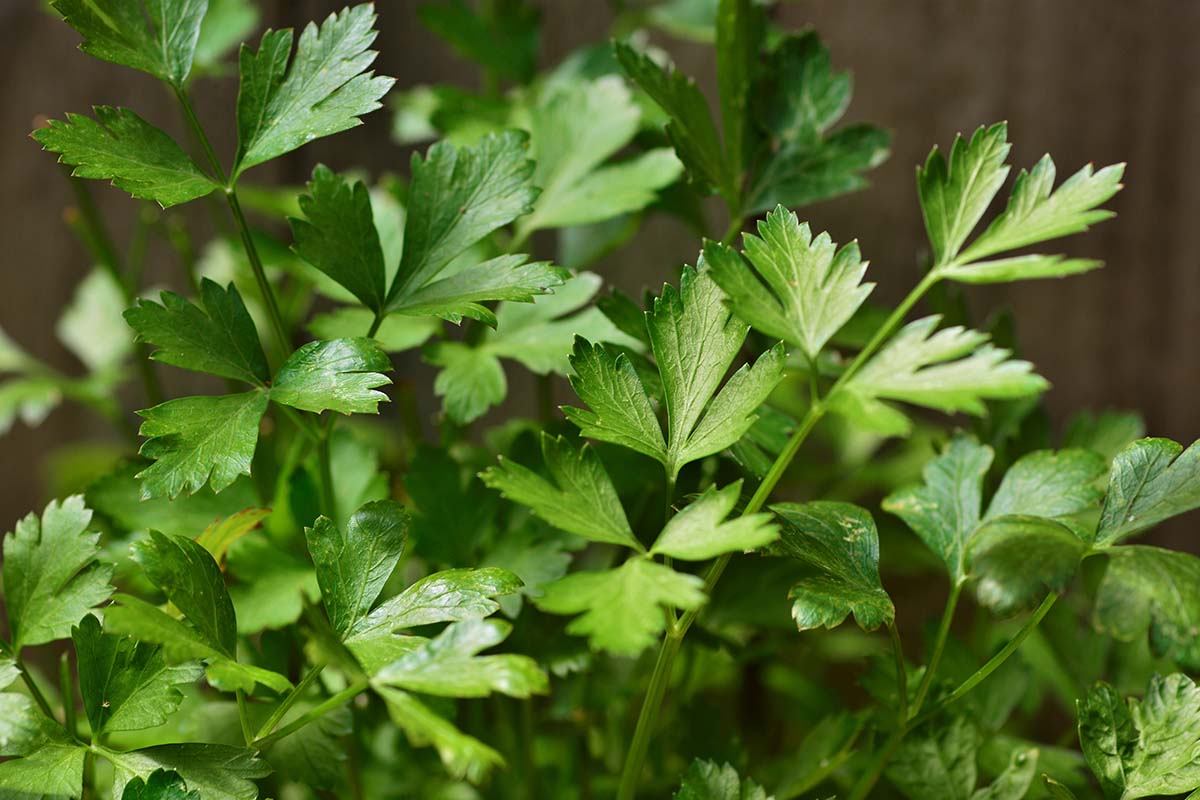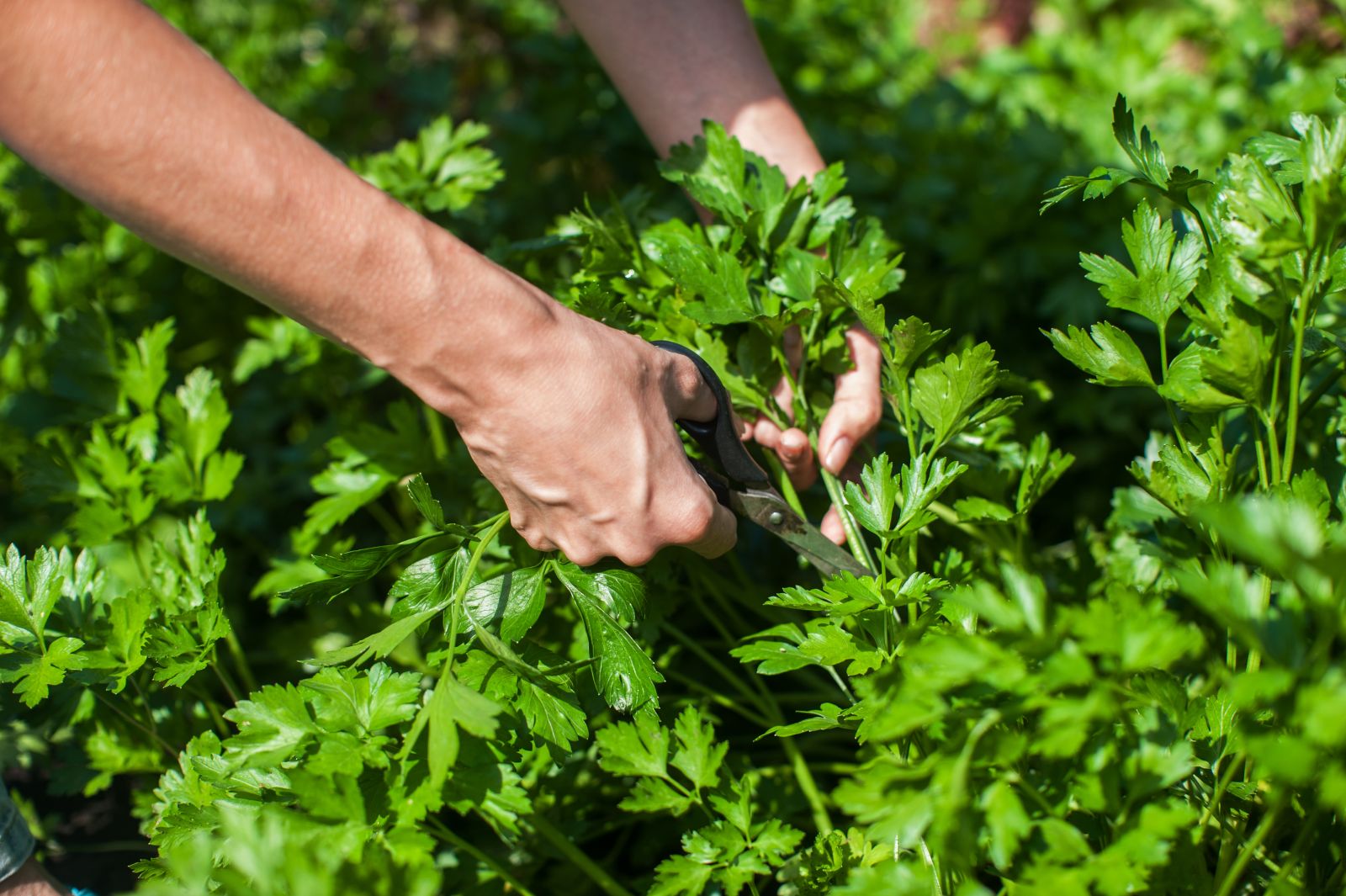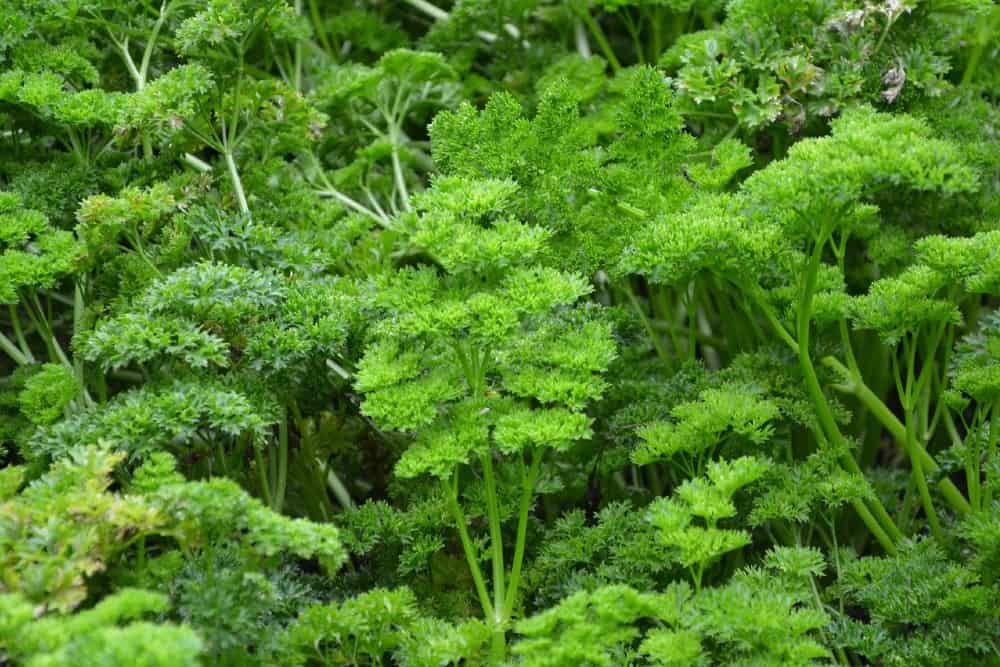The Ideal Environment for Parsley Growth
Creating an ideal environment is crucial when learning how to care for parsley. Parsley plants require a delicate balance of sunlight, temperature, and humidity to thrive. To provide the best conditions, ensure parsley plants receive bright, indirect sunlight for at least 4-6 hours a day. Direct sunlight can cause the leaves to become scorched, so it’s essential to filter the sun’s rays using a sheer curtain or shade cloth.
In terms of temperature, parsley plants prefer cooler climates, ranging from 60°F to 75°F (15°C to 24°C). Avoid placing parsley plants near heating vents or radiators, as this can cause the temperature to fluctuate and stress the plant. Humidity is also vital, with parsley plants thriving in environments with a relative humidity of 50-60%. You can increase the humidity around parsley plants by placing the pot on a tray filled with water and pebbles.
Soil selection is also critical when it comes to how to care for parsley. Choose a well-draining potting mix specifically designed for herbs, and avoid using regular garden soil, which can retain too much water and cause root rot. Finally, select a pot that is at least 6-8 inches deep to accommodate the parsley plant’s taproot. By providing parsley plants with the ideal environment, you’ll be rewarded with a bountiful harvest of fresh, flavorful leaves.
Watering Parsley: The Key to Healthy Leaves
Proper watering is essential when learning how to care for parsley. Parsley plants require consistent moisture, especially when they’re young. Water your parsley plants when the top 1-2 inches of soil feel dry to the touch. Avoid getting water on the leaves to prevent fungal diseases. Instead, water at the base of the plant, allowing the soil to absorb the water.
The frequency of watering parsley plants depends on the climate and soil type. In general, parsley plants need about 1-2 inches of water per week, either from rainfall or irrigation. Check the soil daily, and water only when necessary. Overwatering can lead to root rot, while underwatering can cause the leaves to become wilted and discolored.
It’s also important to avoid getting parsley plants waterlogged. Check the drainage of your pot by watering it and observing how quickly the water drains. If the water drains slowly, consider repotting your parsley plant in a well-draining potting mix. By watering your parsley plants correctly, you’ll be rewarded with healthy, vibrant leaves that are perfect for adding fresh flavor to your favorite dishes.
Fertilizing Parsley for Optimal Flavor and Aroma
Fertilizing parsley plants is a crucial step in how to care for parsley. Parsley plants require regular feeding to produce healthy, flavorful leaves. Choose a balanced, water-soluble fertilizer that is specifically formulated for herbs. Avoid using fertilizers that are high in nitrogen, as they can promote leaf growth at the expense of flavor and aroma.
Apply the fertilizer at half the recommended strength to prevent burning the roots. You can fertilize your parsley plants every 1-2 weeks during the growing season. If you’re using a slow-release fertilizer, follow the manufacturer’s instructions for application frequency.
It’s also important to fertilize parsley plants at the right time. Fertilize your parsley plants when they’re about 6-8 inches tall, and again when they’re about to flower. This will promote healthy growth and prevent the plant from flowering too early. By fertilizing your parsley plants regularly, you’ll be rewarded with a bountiful harvest of fresh, flavorful leaves that are perfect for adding to your favorite dishes.
In addition to fertilizing, make sure to provide your parsley plants with adequate nutrients by using a well-draining potting mix that is rich in organic matter. This will help to promote healthy root growth and prevent nutrient deficiencies. By following these tips, you’ll be well on your way to growing delicious, fragrant parsley that will elevate any dish.
Pest Control and Common Parsley Diseases
When learning how to care for parsley, it’s essential to be aware of common pests and diseases that can affect parsley plants. Aphids, spider mites, and whiteflies are common pests that can infest parsley plants, causing damage to the leaves and stems. To prevent infestations, inspect your parsley plants regularly, and use organic pest control methods such as neem oil or insecticidal soap.
Root rot is a common disease that affects parsley plants, especially when they’re overwatered. This fungal disease causes the roots to rot, leading to yellowing leaves and a soft, mushy stem. To prevent root rot, ensure good drainage in your pot, and avoid overwatering your parsley plants.
Other common diseases that affect parsley plants include leaf spot and powdery mildew. Leaf spot is a fungal disease that causes small, circular lesions on the leaves, while powdery mildew is a fungal disease that causes a white, powdery coating on the leaves. To prevent these diseases, provide good air circulation around your parsley plants, and avoid getting water on the leaves.
To treat pest and disease issues organically, use natural remedies such as garlic spray, cinnamon, or cayenne pepper. These remedies can help to repel pests and prevent diseases from spreading. By being aware of common pests and diseases, and taking steps to prevent and treat them, you can ensure a healthy and thriving parsley harvest.
Pruning and Harvesting Parsley for Maximum Yield
Pruning and harvesting parsley plants regularly is crucial for promoting healthy growth and preventing flowering. When parsley plants are not pruned, they can become leggy and produce flowers, which can reduce the quality and quantity of the leaves. To prune parsley plants, simply pinch off the top sets of leaves, leaving about 1-2 inches of stem intact. This will encourage the plant to produce new growth and prevent flowering.
When harvesting parsley leaves, it’s essential to do so correctly to encourage continuous growth. Harvest parsley leaves in the morning, after the dew has dried but before the heat of the day. Simply pinch or cut off the leaves you need, leaving the stems intact. Avoid pulling the leaves off the plant, as this can damage the stems and reduce future growth.
Regular pruning and harvesting can also help to promote bushy growth and increase the yield of parsley leaves. By pruning and harvesting parsley plants regularly, you can encourage the plant to produce more leaves and stems, resulting in a bountiful harvest. Additionally, pruning and harvesting can help to improve the flavor and aroma of parsley leaves, making them perfect for adding to your favorite dishes.
When learning how to care for parsley, it’s essential to understand the importance of pruning and harvesting. By pruning and harvesting parsley plants regularly, you can promote healthy growth, prevent flowering, and encourage continuous production of fresh, flavorful leaves. With these simple tips, you can enjoy a thriving parsley harvest all season long.
How to Propagate Parsley Plants for a Continuous Supply
Propagating parsley plants is a simple and effective way to ensure a continuous supply of fresh, flavorful leaves. There are three main methods of propagating parsley plants: seed sowing, division, and stem cuttings. Each method has its own advantages and disadvantages, and can be used to suit different growing conditions and preferences.
Seed Sowing: Sowing parsley seeds is a great way to start new parsley plants from scratch. To sow parsley seeds, fill a seed tray or small pots with a good quality potting mix. Sow the seeds about 1/8 inch deep and 1-2 inches apart. Water gently and keep the soil consistently moist. Keep the soil warm, around 70-75°F, until germination. Transplant the seedlings to individual pots or into a larger container once they have 2-3 sets of leaves.
Division: Dividing established parsley plants is a quick and easy way to propagate new plants. To divide parsley plants, carefully dig up the entire plant, taking care not to damage the roots. Gently separate the roots and replant the separated sections in individual pots or into a larger container. Water well and keep the soil consistently moist until the new plants are established.
Stem Cuttings: Taking stem cuttings is another way to propagate parsley plants. To take stem cuttings, cut 2-3 inch sections of stem from the tip of a healthy parsley plant. Remove lower leaves, leaving only a few leaves at the top. Dip the cut end in rooting hormone and plant in a pot filled with a good quality potting mix. Water well and keep the soil consistently moist until roots develop.
Regardless of the method chosen, it’s essential to provide the new parsley plants with the right conditions to thrive. This includes providing adequate light, water, and nutrients, as well as pruning and harvesting regularly to promote healthy growth. By propagating parsley plants regularly, you can ensure a continuous supply of fresh, flavorful leaves to add to your favorite dishes.
When learning how to care for parsley, understanding how to propagate parsley plants is crucial. By using one or more of these methods, you can ensure a continuous supply of fresh parsley leaves, and enjoy the many benefits of growing your own herbs. With a little practice and patience, you can become a parsley propagation expert and enjoy a bountiful harvest all year round.
Tips for Growing Parsley Indoors and Outdoors
When it comes to growing parsley, understanding the specific needs of indoor and outdoor environments is crucial. By providing the right conditions, you can enjoy a thriving parsley harvest regardless of where you grow it.
Indoor Parsley Growth: When growing parsley indoors, it’s essential to provide bright, indirect light. A south-facing window or a grow light can provide the necessary light for parsley growth. Keep the soil consistently moist, but not waterlogged, and maintain a temperature between 65-75°F. Choose a container with good drainage, and use a well-draining potting mix to prevent root rot.
Outdoor Parsley Growth: When growing parsley outdoors, choose a location that receives partial shade to full sun, depending on your climate. Parsley prefers well-draining soil and can thrive in a variety of soil types. Water regularly, but avoid overwatering, which can lead to root rot. Fertilize regularly, and prune parsley plants regularly to promote healthy growth and prevent flowering.
Container Selection: When growing parsley in containers, choose a pot that is at least 6-8 inches deep to accommodate the parsley roots. Use a well-draining potting mix, and add a layer of small rocks or broken pottery at the bottom of the pot to improve drainage.
Soil Preparation: When growing parsley in the ground, prepare the soil by adding organic matter such as compost or well-rotted manure. This will improve soil structure and fertility, providing parsley plants with the necessary nutrients for healthy growth.
Climate Considerations: Parsley is a hardy herb that can thrive in a variety of climates. However, it’s essential to provide protection from extreme temperatures, wind, and frost. In areas with hot summers, provide shade for parsley plants during the hottest part of the day. In areas with cold winters, bring parsley plants indoors or provide protection from frost.
By following these tips, you can successfully grow parsley indoors and outdoors, and enjoy a bountiful harvest of fresh, flavorful leaves. Remember to care for your parsley plants regularly, and troubleshoot any issues that may arise. With a little practice and patience, you can become a parsley growing expert and enjoy the many benefits of growing your own herbs.
Parsley Care Mistakes to Avoid for a Thriving Harvest
When it comes to growing parsley, understanding what not to do is just as important as knowing what to do. By avoiding common mistakes, you can ensure a thriving harvest of fresh, flavorful leaves. Here are some common parsley care mistakes to avoid:
Over-Handling: Parsley plants are delicate and can be easily damaged by excessive handling. Avoid touching or handling parsley plants excessively, as this can cause stress and lead to disease or pest issues.
Inadequate Light: Parsley plants require bright, indirect light to thrive. Insufficient light can lead to weak, spindly growth and a lack of flavor. Ensure parsley plants receive at least 4-6 hours of direct sunlight or 12-14 hours of indirect sunlight per day.
Poor Soil Quality: Parsley plants prefer well-draining soil with a pH between 6.0 and 7.0. Avoid using soil with poor drainage, as this can lead to root rot and other issues. Instead, choose a high-quality potting mix specifically designed for herbs.
Insufficient Watering: Parsley plants require consistent moisture, especially when they’re young. Avoid underwatering, which can lead to weak growth and a lack of flavor. Water parsley plants when the top inch of soil feels dry to the touch.
Over-Fertilization: While fertilizing parsley plants is essential, over-fertilization can be detrimental. Avoid using too much fertilizer, as this can lead to weak growth and a lack of flavor. Instead, fertilize parsley plants regularly with a balanced, water-soluble fertilizer.
By avoiding these common mistakes, you can ensure a thriving harvest of fresh, flavorful parsley leaves. Remember to care for your parsley plants regularly, and troubleshoot any issues that may arise. With a little practice and patience, you can become a parsley growing expert and enjoy the many benefits of growing your own herbs. By following these tips and learning how to care for parsley, you can enjoy a bountiful harvest of fresh, flavorful leaves all year round.








